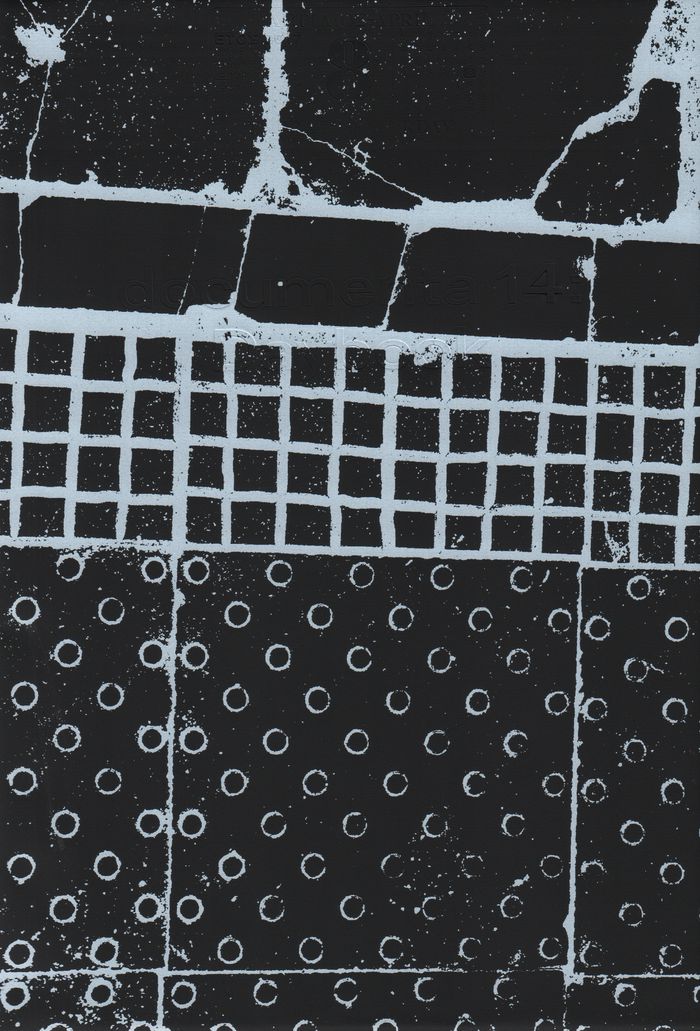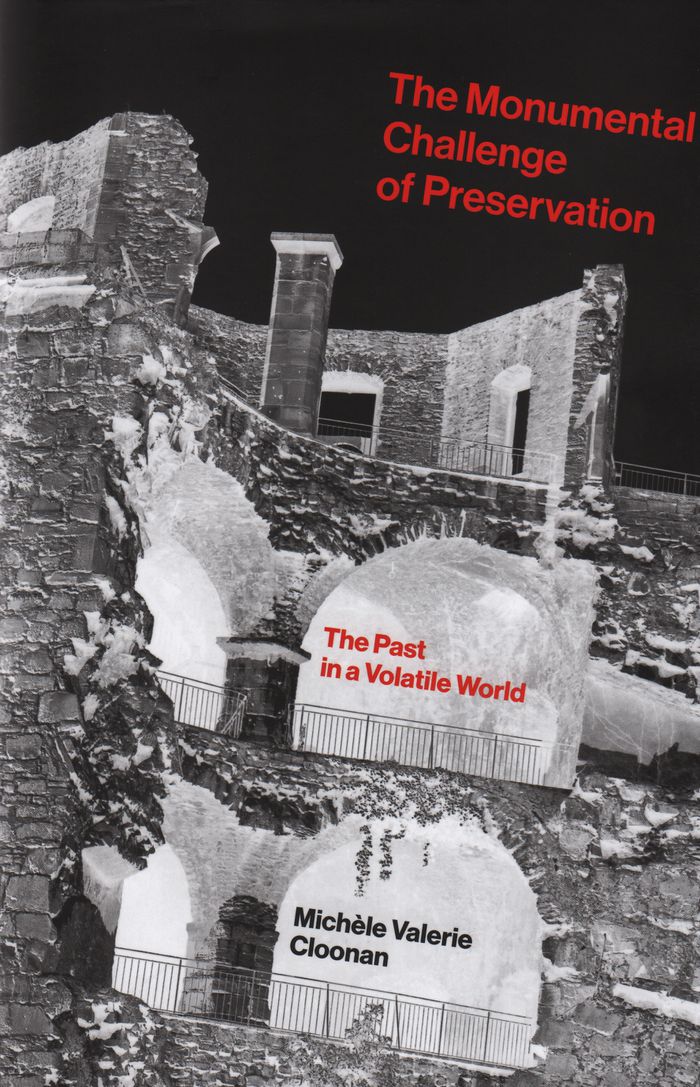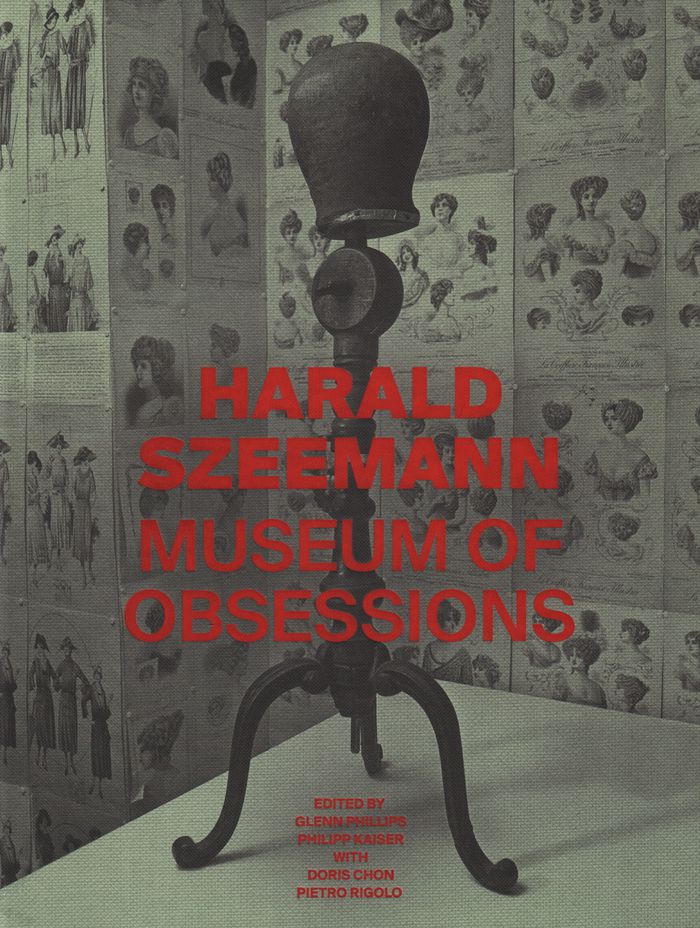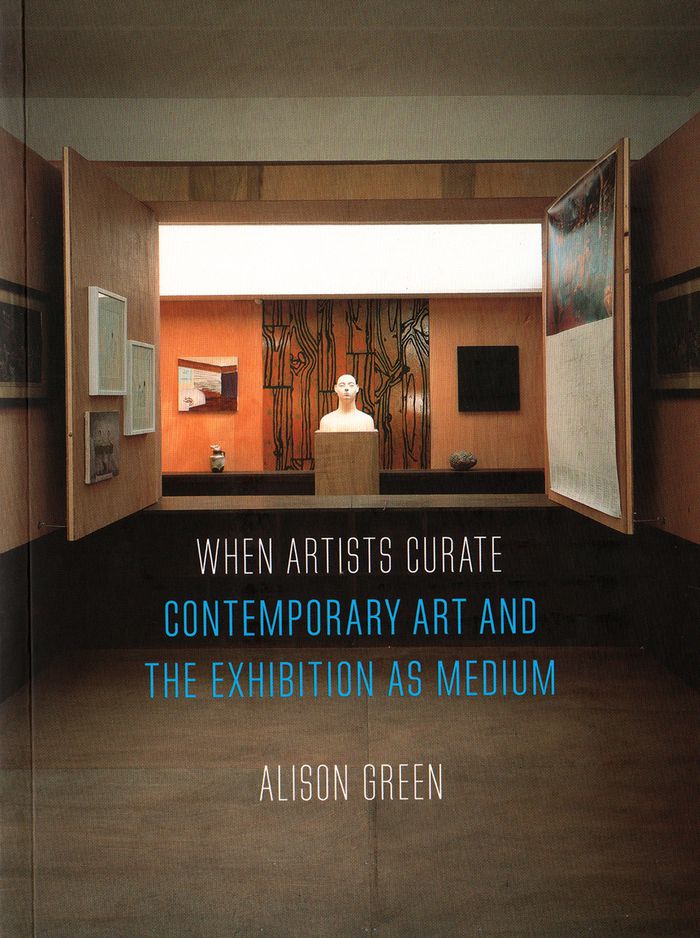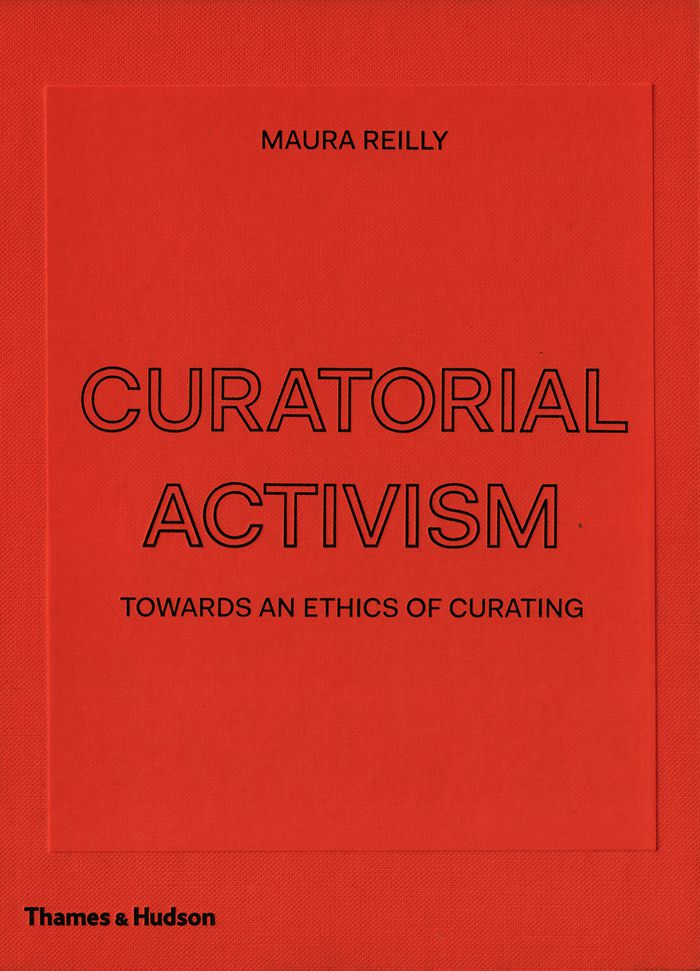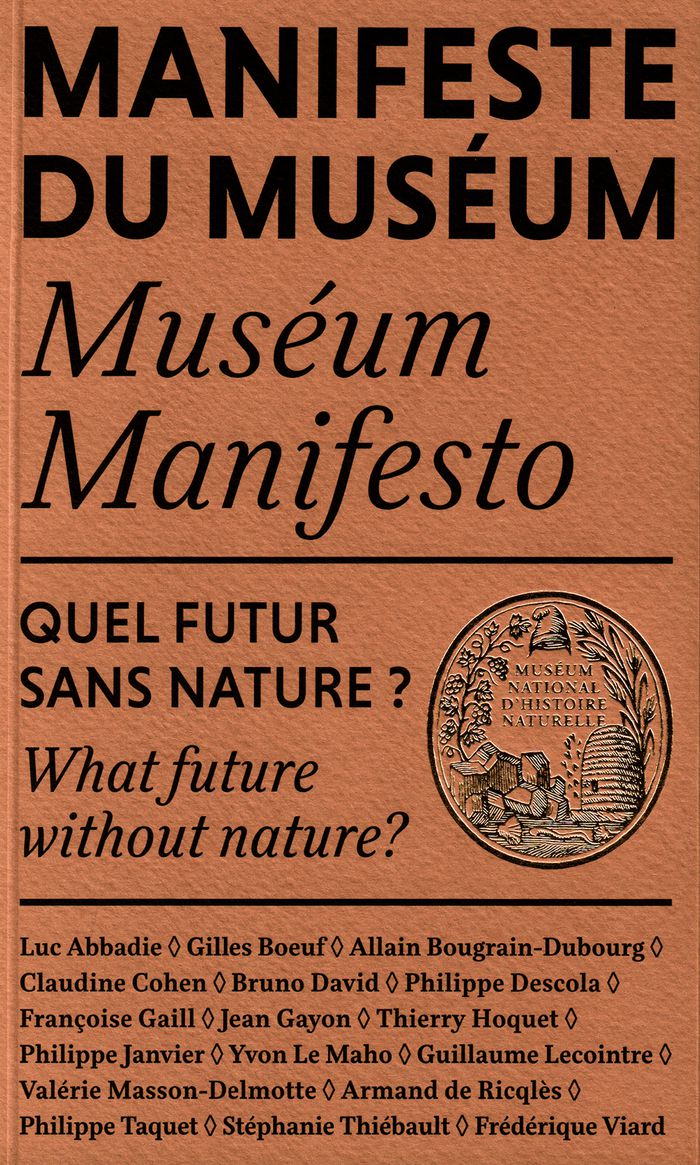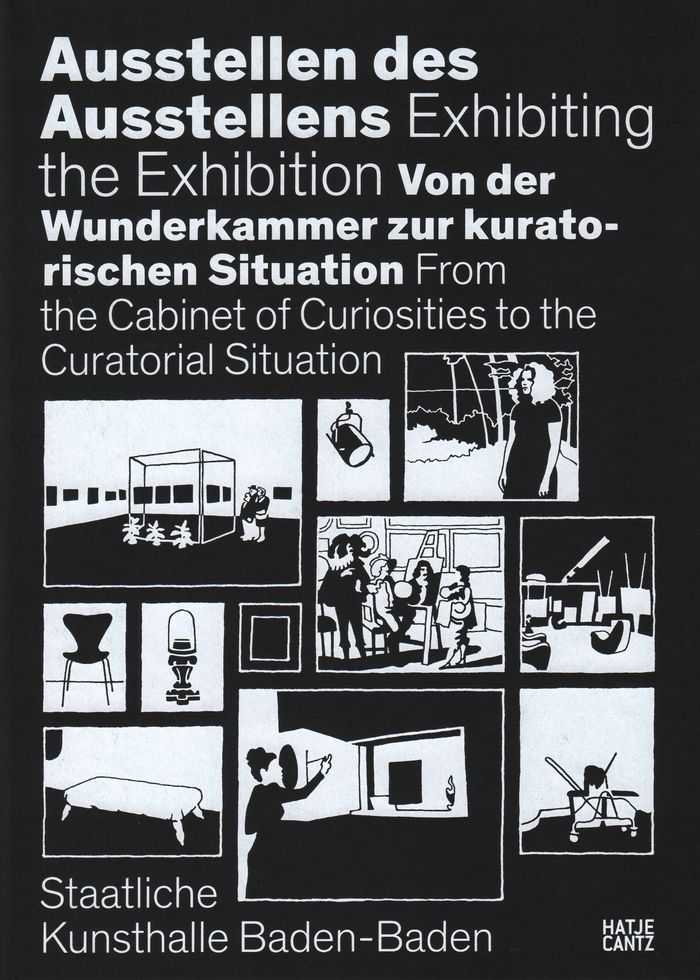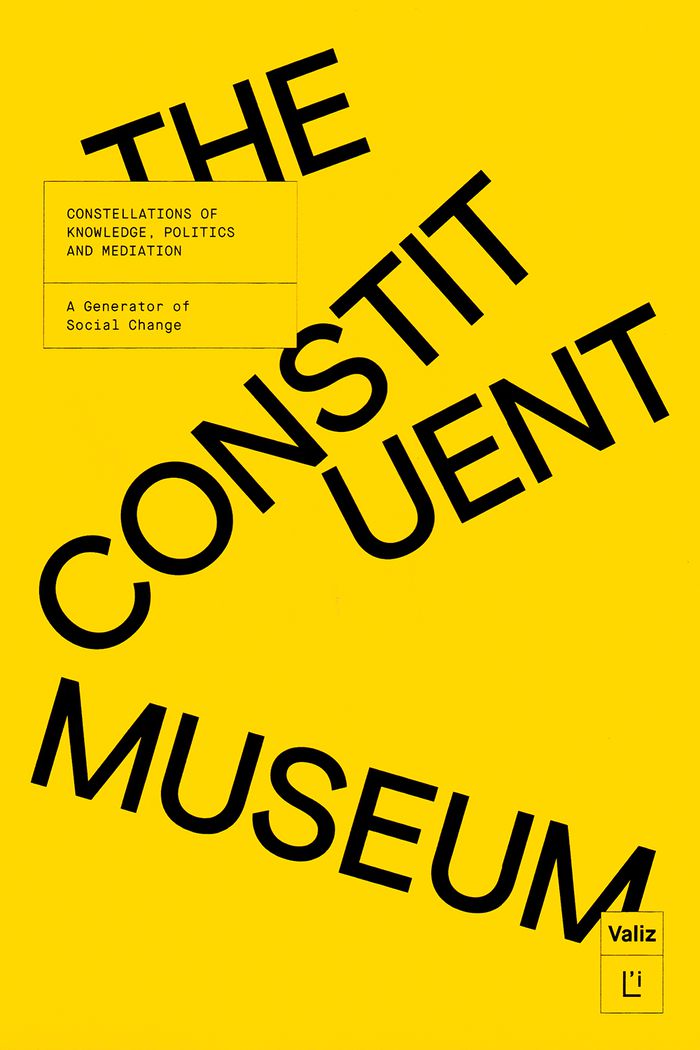Documenta 14 Daybook
$65.00
(disponible sur commande)
Résumé:
Follow the 163 days of documenta 14 in this daily record created by the event’s artists. " Presented in the form of an artist’s daybook, this journal offers readers a panoramic view of the event through wide-ranging perspectives. Each "daily" spread is created by one of the exhibition’s artists. It features artwork created by the artist specifically for the book and(...)
Documenta 14 Daybook
Actions:
Prix:
$65.00
(disponible sur commande)
Résumé:
Follow the 163 days of documenta 14 in this daily record created by the event’s artists. " Presented in the form of an artist’s daybook, this journal offers readers a panoramic view of the event through wide-ranging perspectives. Each "daily" spread is created by one of the exhibition’s artists. It features artwork created by the artist specifically for the book and specially commissioned texts by an array of critics, curators, historians, poets, and novelists.
Muséologie
$40.95
(disponible sur commande)
Résumé:
The monuments—movable, immovable, tangible, and intangible—of the world's shared cultural heritage are at risk. War, terrorism, natural disaster, vandalism, and neglect make the work of preservation a greater challenge than it has been since World War II. In « The Monumental Challenge of Preservation » Michèle Cloonan makes the case that, at this critical juncture, we(...)
The monumental challenge of preservation
Actions:
Prix:
$40.95
(disponible sur commande)
Résumé:
The monuments—movable, immovable, tangible, and intangible—of the world's shared cultural heritage are at risk. War, terrorism, natural disaster, vandalism, and neglect make the work of preservation a greater challenge than it has been since World War II. In « The Monumental Challenge of Preservation » Michèle Cloonan makes the case that, at this critical juncture, we must consider preservation in the broadest possible contexts. Preservation requires the efforts of an increasing number of stakeholders.
Muséologie
$98.00
(disponible sur commande)
Résumé:
Widely regarded as one of the most influential curators of the second half of the twentieth century, Harald Szeemann (1933–2005) is associated with some of the most important artistic developments of the postwar era. An advocate for avant-garde movements like Conceptualism and Postminimalism, he collaborated with artists such as Joseph Beuys, Bruce Nauman, Richard Serra,(...)
Harald Szeeman: Museum of obsessions
Actions:
Prix:
$98.00
(disponible sur commande)
Résumé:
Widely regarded as one of the most influential curators of the second half of the twentieth century, Harald Szeemann (1933–2005) is associated with some of the most important artistic developments of the postwar era. An advocate for avant-garde movements like Conceptualism and Postminimalism, he collaborated with artists such as Joseph Beuys, Bruce Nauman, Richard Serra, and Cy Twombly, developing new ways of presenting art that reflected his vision of contemporary culture.This book contains essays exploring Szeemann’s curatorial approach as well as interviews with collaborators.
Muséologie
$64.95
(disponible sur commande)
Résumé:
Born in Bern, Switzerland, in 1933, Harald Szeemann was a crucial force in identifying, exhibiting, and writing about the important new movements in postwar contemporary art. This collection of seventy-four texts from the curator’s vast body of written work—which includes essays, lectures, studio notes, reviews, interviews, correspondence, and transcripts—introduces the(...)
Harald Szeemann: Selected writings
Actions:
Prix:
$64.95
(disponible sur commande)
Résumé:
Born in Bern, Switzerland, in 1933, Harald Szeemann was a crucial force in identifying, exhibiting, and writing about the important new movements in postwar contemporary art. This collection of seventy-four texts from the curator’s vast body of written work—which includes essays, lectures, studio notes, reviews, interviews, correspondence, and transcripts—introduces the depth of his method, insight, and inclusive artistic interests. The pieces have been translated from German and French and collected in an informed, authoritative edition, making this the first time Szeemann’s work is accessible in English.
Muséologie
$42.95
(disponible sur commande)
Résumé:
An increasing proportion of exhibitions are curated by artists rather than professional curators. In this ground-breaking book Alison Green provides the first critical history of visual artists curating exhibitions. The artist emerges as someone who carries a special responsibility for critiquing art’s institutions, brings considerable creativity to the craft of making(...)
When artists curate: contemporary art and the exhibition as medium
Actions:
Prix:
$42.95
(disponible sur commande)
Résumé:
An increasing proportion of exhibitions are curated by artists rather than professional curators. In this ground-breaking book Alison Green provides the first critical history of visual artists curating exhibitions. The artist emerges as someone who carries a special responsibility for critiquing art’s institutions, brings considerable creativity to the craft of making exhibitions and, through experimentation, has changed the way exhibitions are understood to be authored and experienced. But the book also establishes a curious ubiquity to the artist-curated exhibition. Rather than being exceptional or rare, artists curate all the time and in all kinds of places: in galleries and in museums, in studios, in borrowed spaces such as shopfronts or industrial buildings, in front rooms and front windows, in zoos or concert halls, on streets and in nature. Seen from the perspective of artists, showing is a part of making art. Once this idea is understood, the history of art starts to look very different.
Muséologie
$49.95
(disponible sur commande)
Résumé:
In one of the most comprehensive analyses ever written on the subject, Michael Tymkiw reassesses the relationship between Nazi exhibition design and modernism. While National Socialist exhibitions are widely understood as platforms for attacking modern art, they also served as sites of surprising formal experimentation among artists, architects, and others, who often drew(...)
Nazi exhibition design and modernism
Actions:
Prix:
$49.95
(disponible sur commande)
Résumé:
In one of the most comprehensive analyses ever written on the subject, Michael Tymkiw reassesses the relationship between Nazi exhibition design and modernism. While National Socialist exhibitions are widely understood as platforms for attacking modern art, they also served as sites of surprising formal experimentation among artists, architects, and others, who often drew upon and reconfigured the practices and principles of modernism when designing exhibition spaces and the objects within. In this book, Tymkiw reveals that a central motivation behind such experimentation was the interest in provoking what he calls "engaged spectatorship"—attempts to elicit experiences among exhibition-goers that would pique their desire to become involved in wider processes of social and political change.
Muséologie
$45.95
(disponible sur commande)
Résumé:
Current art world statistics demonstrate that the fight for gender and race equality in the art world is far from over: only sixteen percent of this year’s Venice Biennale artists were female; only fourteen percent of the work displayed at MoMA in 2016 was by nonwhite artists; only a third of artists represented by U.S. galleries are female, but over two-thirds of(...)
Curatorial activism: towards an ethics of curating
Actions:
Prix:
$45.95
(disponible sur commande)
Résumé:
Current art world statistics demonstrate that the fight for gender and race equality in the art world is far from over: only sixteen percent of this year’s Venice Biennale artists were female; only fourteen percent of the work displayed at MoMA in 2016 was by nonwhite artists; only a third of artists represented by U.S. galleries are female, but over two-thirds of students enrolled in art and art-history programs are young women. Arranged in thematic sections focusing on feminism, race, and sexuality, "Curatorial Activism" examines and illustrates pioneering examples of exhibitions that have broken down boundaries and demonstrated that new approaches are possible, from Linda Nochlin’s “Women Artists” at LACMA in the mid-1970s to Jean-Hubert Martin’s “Carambolages” in 2016 at the Grand Palais in Paris.
Muséologie
$14.95
(disponible sur commande)
Résumé:
Avec l'histoire naturelle, nous sommes, en tant qu'humains, enracinés dans le monde naturel et incités à penser en son sein, avec lui, et non pas contre lui. Nous appelons nos élus et nos dirigeants, actuels et futurs, à tenir compte de l'histoire naturelle et de tous les enjeux intellectuels, sociaux, culturels, économiques, éthiques, et vitaux, qu'elle englobe : ils(...)
Manifeste du Muséum : quel futur sans nature ?
Actions:
Prix:
$14.95
(disponible sur commande)
Résumé:
Avec l'histoire naturelle, nous sommes, en tant qu'humains, enracinés dans le monde naturel et incités à penser en son sein, avec lui, et non pas contre lui. Nous appelons nos élus et nos dirigeants, actuels et futurs, à tenir compte de l'histoire naturelle et de tous les enjeux intellectuels, sociaux, culturels, économiques, éthiques, et vitaux, qu'elle englobe : ils sont indispensables pour penser et construire le monde de demain.
Muséologie
$87.00
(disponible sur commande)
Résumé:
This publication investigates the history of exhibiting up to the present day, from predecessors of the modern museum to 20th-century exhibition methods and curatorial positions. Text by Beatrice von Bismarck, Regine Ehleiter, Stefanie Heraeus, Johan Holten, Moritz Scheper. Conversation between Bénédicte Savoy, Johan Holten.
Exhibiting the exhibition: from the cabinet of curiosities to the curatorial situation
Actions:
Prix:
$87.00
(disponible sur commande)
Résumé:
This publication investigates the history of exhibiting up to the present day, from predecessors of the modern museum to 20th-century exhibition methods and curatorial positions. Text by Beatrice von Bismarck, Regine Ehleiter, Stefanie Heraeus, Johan Holten, Moritz Scheper. Conversation between Bénédicte Savoy, Johan Holten.
Muséologie
$47.50
(disponible sur commande)
Résumé:
"The Constituent Museum" is inspired by a simple question: What would happen if museums put relationships at the center of their operations? Museums often organize their relationships with the public as "educational," but this role can be rethought. This book imagines the visitor not as a passive receiver of predefined content but as an active member of the constituent(...)
The constituent museum: constellations of knowledge, politics and mediation
Actions:
Prix:
$47.50
(disponible sur commande)
Résumé:
"The Constituent Museum" is inspired by a simple question: What would happen if museums put relationships at the center of their operations? Museums often organize their relationships with the public as "educational," but this role can be rethought. This book imagines the visitor not as a passive receiver of predefined content but as an active member of the constituent body of the museum.
Muséologie
